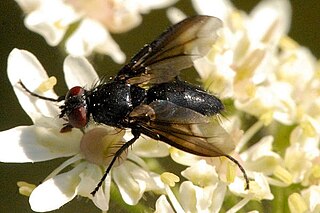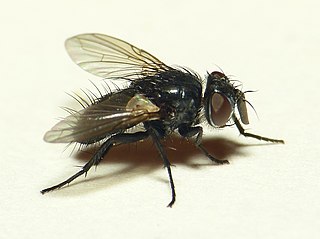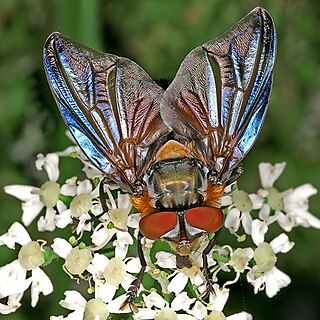Aplomya is a genus of flies in the family Tachinidae.
Blepharella is a genus of flies in the family Tachinidae.

Ceromya is a genus of flies in the family Tachinidae.
Chetogena is a genus of flies in the family Tachinidae.
Chlorolydella is a genus of flies in the family Tachinidae.
Sumpigaster is a genus of flies in the family Tachinidae.

Winthemia is a genus of flies in the family Tachinidae.

Linnaemya is a genus of flies in the family Tachinidae.

Voriini is a tribe of flies in the family Tachinidae. More junior homonyms exist of Wagneria than any other animal genus name.

Dexiinae is a subfamily of flies in the family Tachinidae.

Dufouriini is a tribe of flies in the family Tachinidae.

Dexiini is a tribe of flies in the family Tachinidae.

Exoristinae is a subfamily of flies in the family Tachinidae. Most species are parasitoids of caterpillars.

Blondeliini is a tribe of parasitic flies in the family Tachinidae. Larvae are parasitoids of other insects, mostly beetles and caterpillars. Although nearly cosmopolitan, its greatest diversity is in the New World and especially in South America.

Eryciini is a tribe of flies in the family Tachinidae.

Goniini is a tribe of parasitic flies in the family Tachinidae. Members of Goniini are distinguished from other Tachinidae by laying small "microtype" eggs that hatch only after being ingested by a host.

Phasiinae is a subfamily of flies in the family Tachinidae. Except for the small tribe Strongygastrini members of this subfamily attack only Heteroptera.

Tachininae is a subfamily of flies in the family Tachinidae.

Leskiini is a tribe of flies in the family Tachinidae.

Minthoini is a tribe of flies in the family Tachinidae.













